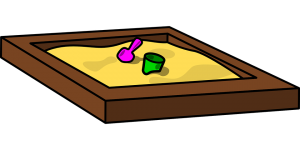
While the game has been passed down from generation to generation I don’t think anyone actually knows how long the game has actually been around, or who started the game for the first time. All we have to go by is here say and old paintings that may or may not depict children playing the game with their families. One common theory is that the game was designed to show the child that things do not disappear when removed from their sight. There are however paintings of children playing the infamous game as early as 1895 in a painting by Georgios Jakobides. Most new parents know how to play the game, and sing the peek a boo lyrics simply cause our parents played and sang it with us, or they have seen others playing the game with their children. This game seems to just be part of human nature in a way, we all know how to do it. And we all inevitably loved the game from the first time we played it.
Skills learned from peek a boo
While many think it’s just a game played with babies, peek a boo has many benefits. It has the potential to teach early hand-eye coordination. It shows infants how to move their hands to and away from their face. And how to look for an object that has suddenly disappeared from their line of sight. It also teaches children object permanence, that the object or person does not simply disappear when removed from sight. If you cover mommies face with a cover it does not go poof into oblivion its still there when you remove the object blocking your view. It was once thought that a child was born thinking that once you cannot see an object it ceases to exist. This simply isn’t so mommy does not cease to exist when she covers her face she is still there, you’ll see. Does the phrase out of sight out of mind sound familiar? Using peek, a boo to foster an education experience.Once again it warrants saying that this is the perfect way to teach your little one that things covered up are still there. If you cover a toy with a blanket you can teach them to look for objects, and of course the joys of finding the objects on their own. They can learn how important skills such as hand-eye coordination and their growing sense of touch. It teaches them to look for objects that were just there a second ago. This is a very fun and educational game for ages 0-5. One that will continue to amuse and teach for generations to come. And no one even needs to teach it to us we will remember it from when we were children in someone’s lap or on their bed, or even on a car ride with our siblings.